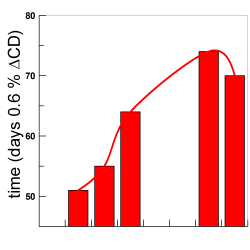Optimizing the efficiency of antioxidants in emulsions by lipophilization:tuning interfacial concentrations
Optimization of the efficiency of antioxidants, AOs, in lipid-based emulsions via chemical modifications of their reactive moieties is not always possible because of the inherent experimental difficulties and because of the regulatory status of AOs. Esterification of hydrophilic AOs may be a practical, convenient, alternative approach [...]




